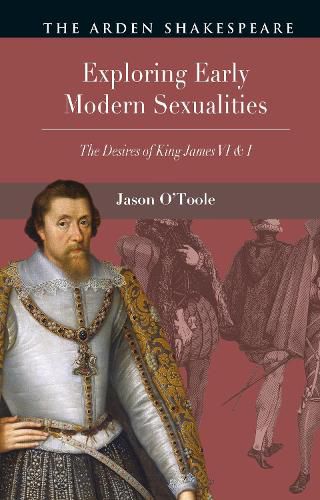Readings Newsletter
Become a Readings Member to make your shopping experience even easier.
Sign in or sign up for free!
You’re not far away from qualifying for FREE standard shipping within Australia
You’ve qualified for FREE standard shipping within Australia
The cart is loading…






How might we understand early modern sexuality prior to contemporary interpretations of sexuality? What does the sex life of James VI and I tell us about the history of sexuality?
Jason O'Toole explores the network of intimacy which structured itself around King James VI and I, his wife Anna of Denmark and James' prominent as well as ancillary favourites to provide answers to these questions. O'Toole presents a cultural and literary history of homoerotic desire by analysing the politics and texture of queer culture at the Jacobean court.
To uncover this history, he investigates how physical manifestations of desire reveal themselves through intimacy between physical bodies and through the handling, employment and exchange of material bodies and objects. Objects which simultaneously represent accepted and forbidden desire. Highlighting how same-sex desire was often concealed, O'Toole evaluates how literary works from the period communicate an unnamed desire between men through metaphor, allegories and Classical allusions. Primary texts including poems, masques, and unpublished manuscripts, recurrent tropes, material culture such as artistic artefacts and architectural design are analysed to unpack sexual double meanings and demonstrate how homoeroticism acts as a regular and accessible subtext. This focus illustrates how homoerotic and homosocial desire were both interwoven and normative in the courts of King James VI & I, foregrounding the social, cultural and political importance of same-sex desire in the early modern period.
$9.00 standard shipping within Australia
FREE standard shipping within Australia for orders over $100.00
Express & International shipping calculated at checkout
Stock availability can be subject to change without notice. We recommend calling the shop or contacting our online team to check availability of low stock items. Please see our Shopping Online page for more details.
How might we understand early modern sexuality prior to contemporary interpretations of sexuality? What does the sex life of James VI and I tell us about the history of sexuality?
Jason O'Toole explores the network of intimacy which structured itself around King James VI and I, his wife Anna of Denmark and James' prominent as well as ancillary favourites to provide answers to these questions. O'Toole presents a cultural and literary history of homoerotic desire by analysing the politics and texture of queer culture at the Jacobean court.
To uncover this history, he investigates how physical manifestations of desire reveal themselves through intimacy between physical bodies and through the handling, employment and exchange of material bodies and objects. Objects which simultaneously represent accepted and forbidden desire. Highlighting how same-sex desire was often concealed, O'Toole evaluates how literary works from the period communicate an unnamed desire between men through metaphor, allegories and Classical allusions. Primary texts including poems, masques, and unpublished manuscripts, recurrent tropes, material culture such as artistic artefacts and architectural design are analysed to unpack sexual double meanings and demonstrate how homoeroticism acts as a regular and accessible subtext. This focus illustrates how homoerotic and homosocial desire were both interwoven and normative in the courts of King James VI & I, foregrounding the social, cultural and political importance of same-sex desire in the early modern period.